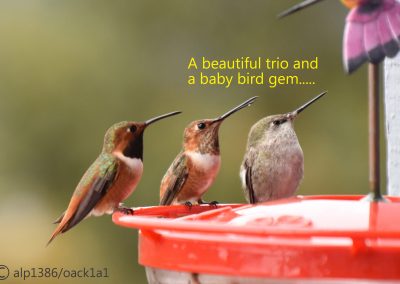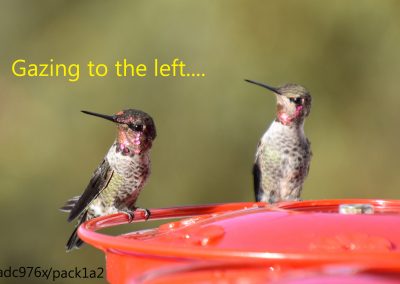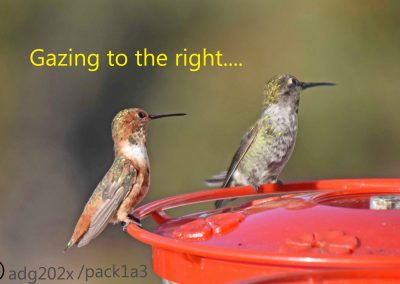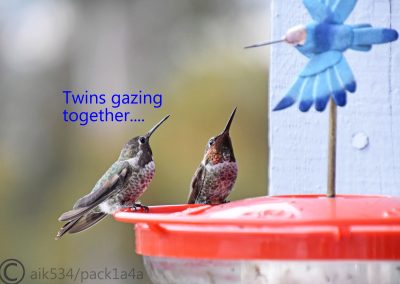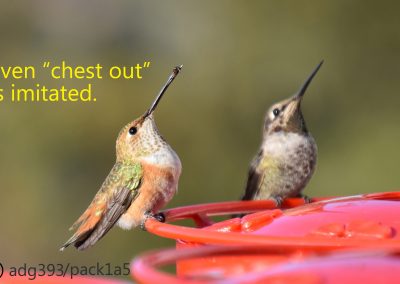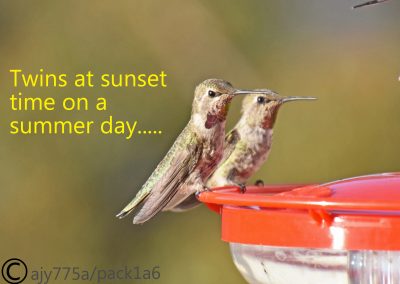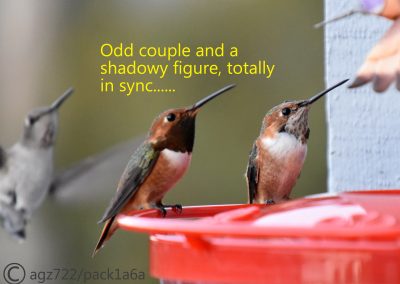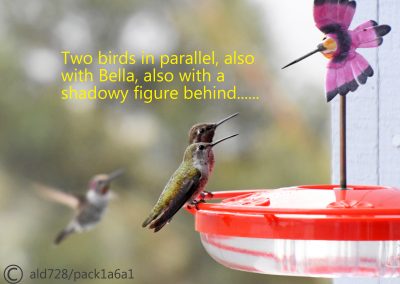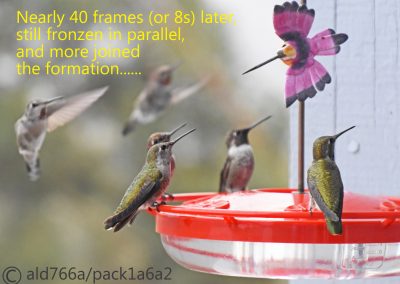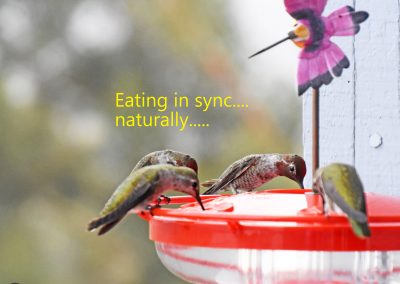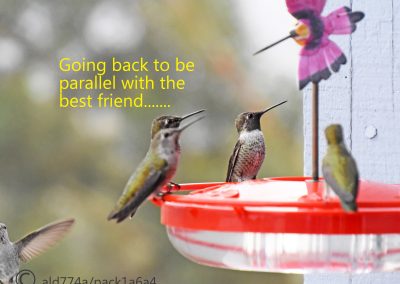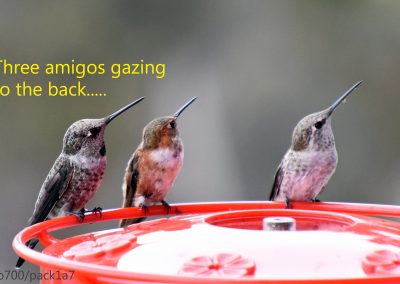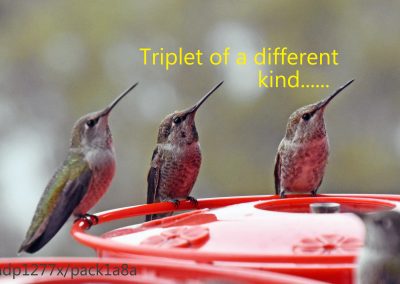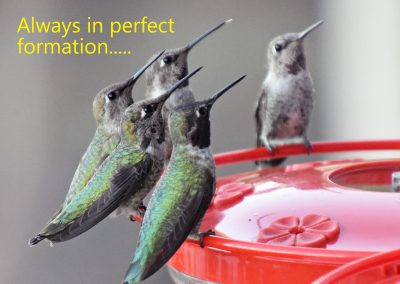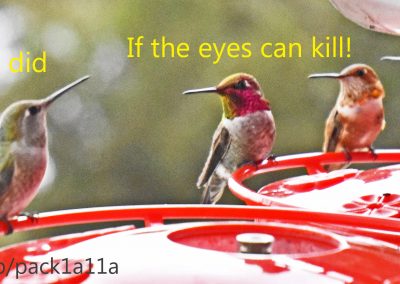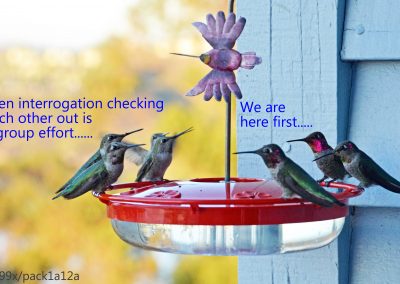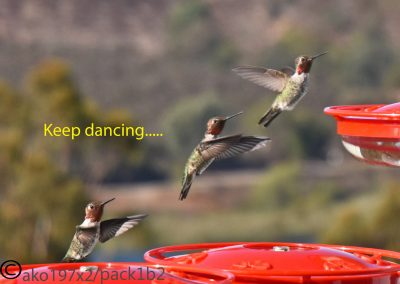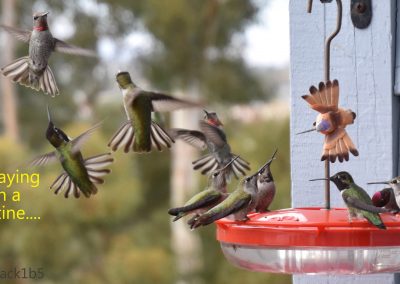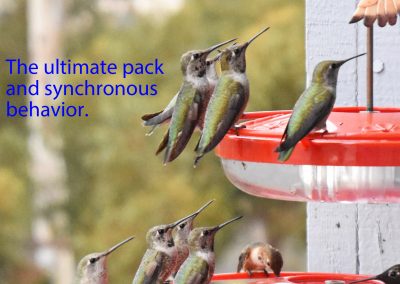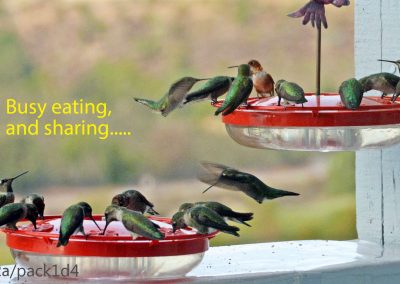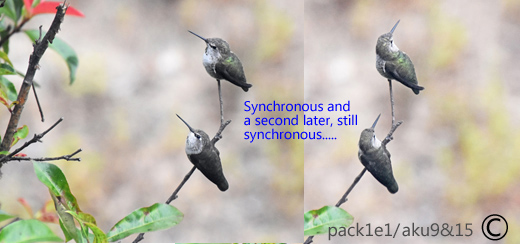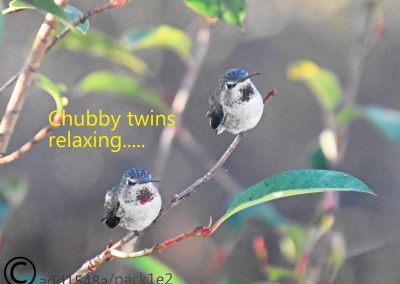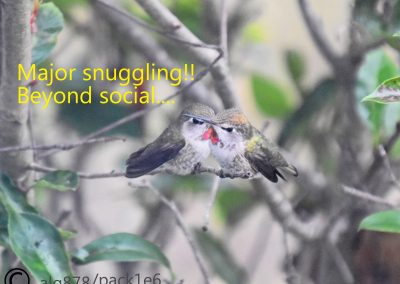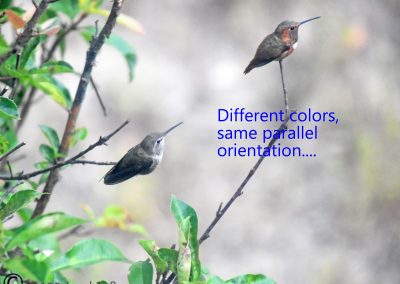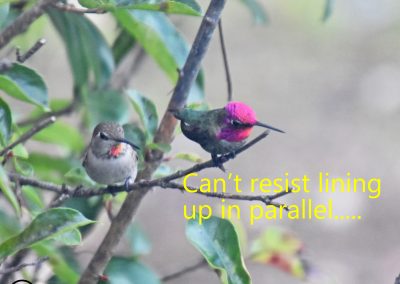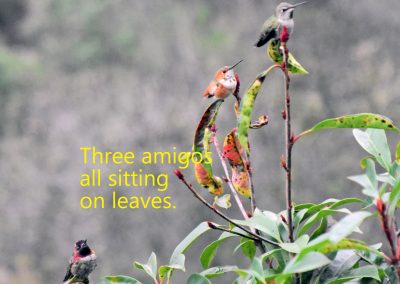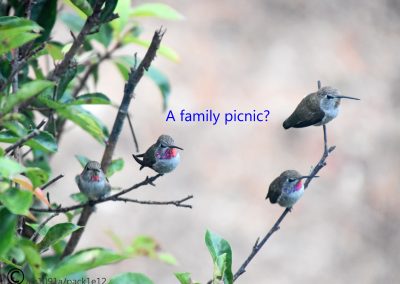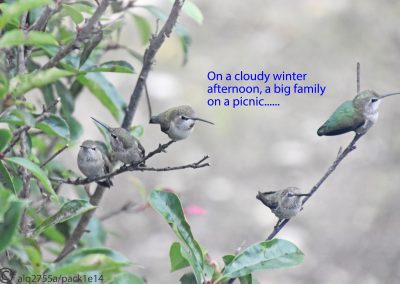I. Herd Behaviors and Imitation
Hummingbirds are believed to be solitary birds. Even though they do seasonal migration, humans do not associate migration as social behaviors. The images on this website demonstrate surprising aspects of hummingbirds not known before. For example, the images show hummingbirds possess empathetic instinct and they show behaviors defined “herd”. In that, the birds, when together, would line up their beaks, heads and bodies in parallel, to a high degree of mathematical precision, and all eyes would gaze into the same direction as if by reflex. The emphatic imitation in animals (so as in birds) is an attribute of social aptitudes. The images also show that hummingbirds come to feeders and the shrub as a group of several, particularly as “twins”, rarely as one. At dinner time in the summer, a big group of birds, as many as 50, would pile up on 4 feeders, and all come at the same time, seemingly from nowhere, as if an inaudible signal (to humans) transverses the space calling on birds from the distance that it is dinner time, and the dinner party goers would disperse at the same time. In the winter time, the feeders are often unoccupied. But when birds come, it is a smaller group of 4 or 5, sometimes 10. More often than not, they would also all leave around the same time. These images suggest that hummingbirds are not solitary birds, they just live in a community, potentially with fluid groups of birds, and the community is invisible to humans.
I-A. Parallel in Every Direction
I-B. Tireless Synchronization
I-C. Parallel Groups
I-D. Triplets and Quads Synchronized Dance
I-E. Total Sync and Group Activity
I-F. Herd Behaviors and Sync on Shrub Branches? Yes, Big Time!

